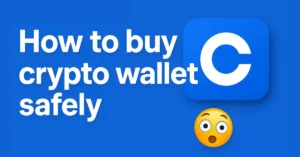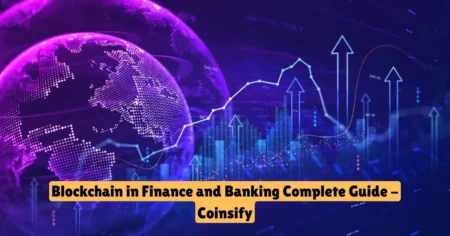application of blockchain in finance
Introduction
Blockchain technology has moved far beyond its association with cryptocurrencies in recent years. It is now seen as a groundbreaking innovation with the potential to transform various industries, none more so than finance. At its core, blockchain is a decentralized digital ledger that records transactions securely and transparently. These characteristics make it especially valuable in a financial world that demands speed, trust, and security.
The finance sector has long struggled with challenges such as high transaction costs, processing delays, and susceptibility to fraud. Blockchain offers solutions by enabling faster payments, reducing reliance on intermediaries, and improving data integrity. As financial institutions and fintech companies increasingly explore blockchain-based systems, it’s clear that this technology is reshaping the future of finance in profound ways.
Key Features of Blockchain Relevant to Finance
Blockchain technology offers several unique features that make it particularly valuable in the financial industry. These features help address long-standing challenges in traditional financial systems and create new opportunities for efficiency, security, and transparency.
Decentralization
In traditional finance, most systems rely on central authorities like banks or clearinghouses to validate and record transactions. Blockchain removes the need for a central authority by distributing control across a network of computers (nodes). This decentralization reduces the risk of single points of failure, increases system resilience, and lowers dependence on intermediaries.
Transparency
Each transaction on a blockchain is recorded on a public or permissioned ledger that is visible to all relevant participants. This high level of transparency helps build trust among parties, reduces disputes, and makes it easier to track the flow of funds and data throughout the financial system.
Immutability
Once a transaction is added to the blockchain, it cannot be altered or deleted. This immutability ensures that financial records are tamper-proof and verifiable, which is crucial for auditing, regulatory compliance, and fraud prevention.
Security
Blockchain uses advanced cryptographic techniques to secure data and transactions. Each transaction is encrypted and linked to the previous one, making unauthorized changes nearly impossible. This level of security is especially important in finance, where sensitive customer data and large sums of money are involved.
Efficiency and Speed
By eliminating middlemen and enabling peer-to-peer transactions, blockchain significantly reduces processing times. Transactions that normally take days—especially international payments—can be completed in minutes or even seconds.
Traceability
Every transaction on the blockchain is recorded with a time stamp and linked to a unique identifier. This allows financial institutions to trace the history of any asset or transaction easily, which is useful for tracking ownership, preventing money laundering, and enhancing accountability.
Top Applications of Blockchain in Finance

Blockchain technology is driving innovation across many areas of finance. From payments to asset management, it is reshaping how financial services are delivered. Below are some of the most impactful applications:
Cross-border Payments and Remittances
International money transfers are often slow, expensive, and rely on multiple intermediaries. Blockchain allows for faster and more cost-effective cross-border payments by enabling direct transactions between parties. With blockchain, funds can be transferred in real time, with minimal fees and improved transparency.
Smart Contracts
Smart contracts are self-executing programs stored on a blockchain that automatically enforce the terms of an agreement. In finance, they can be used for automating loan approvals, insurance payouts, and investment settlements. This reduces paperwork, eliminates human error, and speeds up transaction processing.
Trade Finance
Trade finance traditionally involves a complex web of banks, exporters, importers, and regulators, often relying on manual processes and paper documentation. Blockchain simplifies this by providing a shared digital ledger where all parties can access the same data in real time. This increases transparency, reduces fraud, and cuts processing time significantly.
Digital Identity Verification
Financial institutions are required to perform Know Your Customer (KYC) and Anti-Money Laundering (AML) checks. Blockchain can store verified digital identities securely, allowing customers to share their information across multiple platforms without repeating the entire process. This streamlines onboarding while maintaining compliance.
Clearing and Settlement of Trades
The traditional clearing and settlement process in stock and commodity markets can take up to several days. Blockchain enables real-time or near-instant settlement, reducing counterparty risks and freeing up capital. This leads to more efficient markets and improved liquidity.
Tokenization of Assets
Blockchain allows physical and financial assets—such as real estate, bonds, or even artworks—to be tokenized. These digital tokens represent ownership and can be traded more easily and in smaller units. Tokenization increases accessibility to investment opportunities and enhances liquidity in traditionally illiquid markets.
Decentralized Finance (DeFi)
Decentralized Finance is a rapidly growing sector that uses blockchain to offer financial services—like lending, borrowing, and trading—without traditional intermediaries like banks or brokers. DeFi platforms operate through smart contracts, offering users greater control, lower costs, and access to a global financial ecosystem.
Benefits to the Financial Sector
The integration of blockchain technology into financial systems offers a wide range of benefits. These advantages are not only technical but also strategic, helping institutions operate more securely, efficiently, and transparently.
Cost Reduction
One of the most immediate benefits of blockchain is its ability to reduce costs. By removing intermediaries, automating processes through smart contracts, and cutting down on manual tasks and paperwork, financial institutions can significantly lower operational expenses. Cost savings are especially noticeable in areas like cross-border payments, trade finance, and compliance.
Faster Transactions
Traditional banking systems can take days to process and settle transactions, particularly across borders. Blockchain enables near-instantaneous settlement by allowing peer-to-peer transactions on a shared network. This speed improves cash flow, reduces settlement risk, and enhances customer experience.
Enhanced Security
Blockchain’s cryptographic foundation makes it highly secure. Transactions are encrypted, time-stamped, and linked to previous entries, creating a chain that is extremely difficult to tamper with. This reduces the risks of fraud, hacking, and unauthorized access—critical concerns in financial operations.
Greater Transparency and Auditability
All transactions recorded on a blockchain are visible to permitted participants and cannot be changed once confirmed. This transparency is valuable for internal audits, regulatory compliance, and building trust with clients and stakeholders.
Reduced Fraud and Errors
With a single, immutable ledger, there’s less room for manipulation, duplication, or human error. Blockchain’s accuracy and tamper-resistant design help prevent fraudulent activities such as double-spending, forged documents, or unauthorized transactions.
Improved Compliance and Reporting
Blockchain can simplify regulatory reporting by providing real-time access to transaction histories and account records. Regulators can also gain secure, permissioned access to financial data, improving oversight and reducing the time and cost of compliance checks.
Challenges and Limitations

While blockchain presents significant opportunities for the financial sector, its adoption is not without obstacles. Understanding these challenges is essential for financial institutions aiming to implement blockchain solutions effectively.
Regulatory Uncertainty
One of the biggest hurdles is the lack of clear and consistent regulatory frameworks across countries. Financial institutions often hesitate to adopt blockchain solutions at scale due to concerns over compliance, taxation, and legal enforceability. Without global standards, cross-border blockchain applications face added complexity.
Scalability Issues
Most current blockchain networks face scalability problems. As transaction volume increases, the speed and efficiency of the network can decrease. This is especially critical in high-volume financial markets, where delays can result in lost opportunities and reduced user trust.
Integration with Legacy Systems
Many banks and financial institutions still rely on outdated IT infrastructure. Integrating blockchain with these legacy systems can be technically challenging, time-consuming, and costly. Full integration often requires significant restructuring and investment.
Energy Consumption
Certain blockchain models, particularly those using Proof of Work (like Bitcoin), consume a large amount of electricity. This raises concerns about sustainability, especially for institutions focused on environmental, social, and governance (ESG) goals.
Privacy Concerns
While blockchain offers transparency, it also raises questions about data privacy. Public blockchains make transaction details visible to all participants, which may not be suitable for sensitive financial data. Private or permissioned blockchains can address this, but they reduce the level of decentralization.
Lack of Skilled Talent
There is still a shortage of professionals who fully understand both blockchain technology and its practical applications in finance. This talent gap slows down the development and implementation of blockchain projects in the industry.
Future Outlook
The future of blockchain in the financial sector looks promising, with ongoing advancements and growing interest from both public and private institutions. As the technology matures and regulatory clarity improves, blockchain is expected to become a foundational layer of modern financial systems.
Increasing Institutional Adoption
Major banks, investment firms, and central banks around the world are actively exploring blockchain. Many are already testing or launching blockchain-based platforms for payments, lending, and securities trading. This trend is expected to accelerate as institutions seek faster, more secure, and cost-effective solutions.
Central Bank Digital Currencies (CBDCs)
Governments and central banks are increasingly experimenting with digital currencies powered by blockchain. CBDCs could transform the way money is issued, transferred, and regulated, offering a government-backed alternative to cryptocurrencies while enhancing financial inclusion and efficiency.
Growth of Decentralized Finance (DeFi)
Decentralized finance is still in its early stages but continues to grow rapidly. As more users and developers enter the DeFi space, we can expect a broader range of decentralized financial services and improved protocols that make DeFi more secure and user-friendly.
Regulatory Evolution
As blockchain becomes more mainstream, regulatory bodies are developing clearer frameworks to support innovation while managing risks. More consistent global regulations will help build trust, reduce uncertainty, and encourage broader adoption across financial markets.
Technological Advancements
Future improvements in blockchain scalability, interoperability, and privacy will solve many of today’s limitations. Innovations such as Layer 2 solutions, sharding, and zero-knowledge proofs are being developed to make blockchain more efficient and adaptable for real-world financial use cases.
Increased Collaboration and Standardization
Financial institutions, technology firms, and regulators are beginning to collaborate more closely on blockchain initiatives. Industry-wide standards and shared infrastructure will make it easier to integrate blockchain solutions across different platforms and regions.
Blockchain’s role in finance is no longer a theoretical concept—it’s becoming a practical reality. Over the next 5 to 10 years, we can expect blockchain to transition from pilot projects to full-scale integration, shaping a faster, smarter, and more transparent global financial system.
FAQs on Application of Blockchain in Finance
Q1. What is blockchain in simple terms?
A: Blockchain is a digital system that records and stores data in a secure and transparent way. It’s like a public digital notebook where everyone can see the transactions, and once something is written, it can’t be changed.
Q2. How is blockchain used in finance?
A: In finance, blockchain is used to make payments faster, secure online transactions, automate contracts (smart contracts), verify digital identities, and manage records without needing middlemen like banks or brokers.
Q3. Is blockchain safe to use in financial services?
A: Yes, blockchain is very secure. It uses advanced encryption and stores data across a network of computers, making it difficult to hack or change any information.
Q4. What are the benefits of blockchain in banking?
A: Blockchain helps banks reduce costs, speed up transactions, prevent fraud, improve security, and provide better transparency to both users and regulators.
Q5. What are smart contracts, and how do they work in finance?
A: Smart contracts are digital agreements stored on a blockchain. They automatically carry out actions—like sending money or confirming a payment—when the conditions in the contract are met, with no need for middlemen.
Q6. Can blockchain replace banks?
A: Not entirely. While blockchain can handle some services traditionally done by banks (like payments or loans), banks still offer a wide range of services. However, many banks are now using blockchain to improve how they work.
Q7. What is DeFi and how is it different from traditional finance?
A: DeFi (Decentralized Finance) uses blockchain to offer financial services without banks or middlemen. Everything is managed by smart contracts. Unlike traditional finance, DeFi is open to anyone with an internet connection.
Q8. Are blockchain transactions really faster than traditional ones?
A: Yes. Blockchain can process some transactions—like sending money or settling trades—in minutes or seconds, compared to traditional systems that may take hours or even days.
Q9. What are the risks or downsides of using blockchain in finance?
A: Some challenges include unclear regulations, the need for more technical knowledge, energy usage (for some blockchains), and the difficulty of connecting it with old banking systems.
Q10. Will blockchain be the future of finance?
A: Most experts believe so. Blockchain is still evolving, but it’s already changing how money moves around the world. As technology and regulations improve, blockchain is expected to play a bigger role in the financial industry.
Conclusion
Blockchain is changing the way the financial world works. From faster payments to smarter contracts and safer transactions, it brings many benefits that help both businesses and users. While there are still some challenges, the future of blockchain in finance looks bright. As the technology grows and becomes easier to use, it will likely become a key part of how we handle money and financial services.
Bonus Points: Extra Insights on Blockchain in Finance
Blockchain Can Help Fight Financial Fraud
- Since blockchain records cannot be changed, it’s easier to detect and prevent fraud. This is a big win for both banks and customers.
Micropayments Become Possible
- Blockchain makes it easier to send very small payments instantly and with low fees. This is great for digital services, donations, and pay-per-use platforms.
Financial Inclusion for the Unbanked
- People without access to traditional banks can still use blockchain-based financial services with just a smartphone and internet connection.
Real-Time Auditing
- With blockchain, financial records are always up-to-date and transparent, which means auditors and regulators can review them in real-time.
Custom Financial Products
- Smart contracts allow companies to create custom financial tools like automatic savings plans, programmable insurance, and more, tailored to individual needs.
Global Use, Local Impact
- Blockchain isn’t limited by borders. It can be used globally, but also adapted to solve local problems—like sending remittances to families in developing countries faster and cheaper.
Also read
- What is a Crypto Wallet and How Does It Work? – Coinsify
- 10 Crypto Terms Every Beginner Must Know – Coinsify
- What is Blockchain Technology – Complete Guide – Coinsify
- How to Buy Crypto Safely in 2025 – Complete Guide – Coinsify
- Bitcoin vs Ethereum: Key Differences Explained – Complete Guide
- Ultimate Blockchain Glossary: Learn Blockchain Terms Easily
- How to Buy Bitcoin Safely (Complete Beginner’s Guide)
- Top 10 Crypto Wallets for Beginners (2025 Edition)
- What is Cryptocurrency? A Beginner-Friendly Guide (2025)






